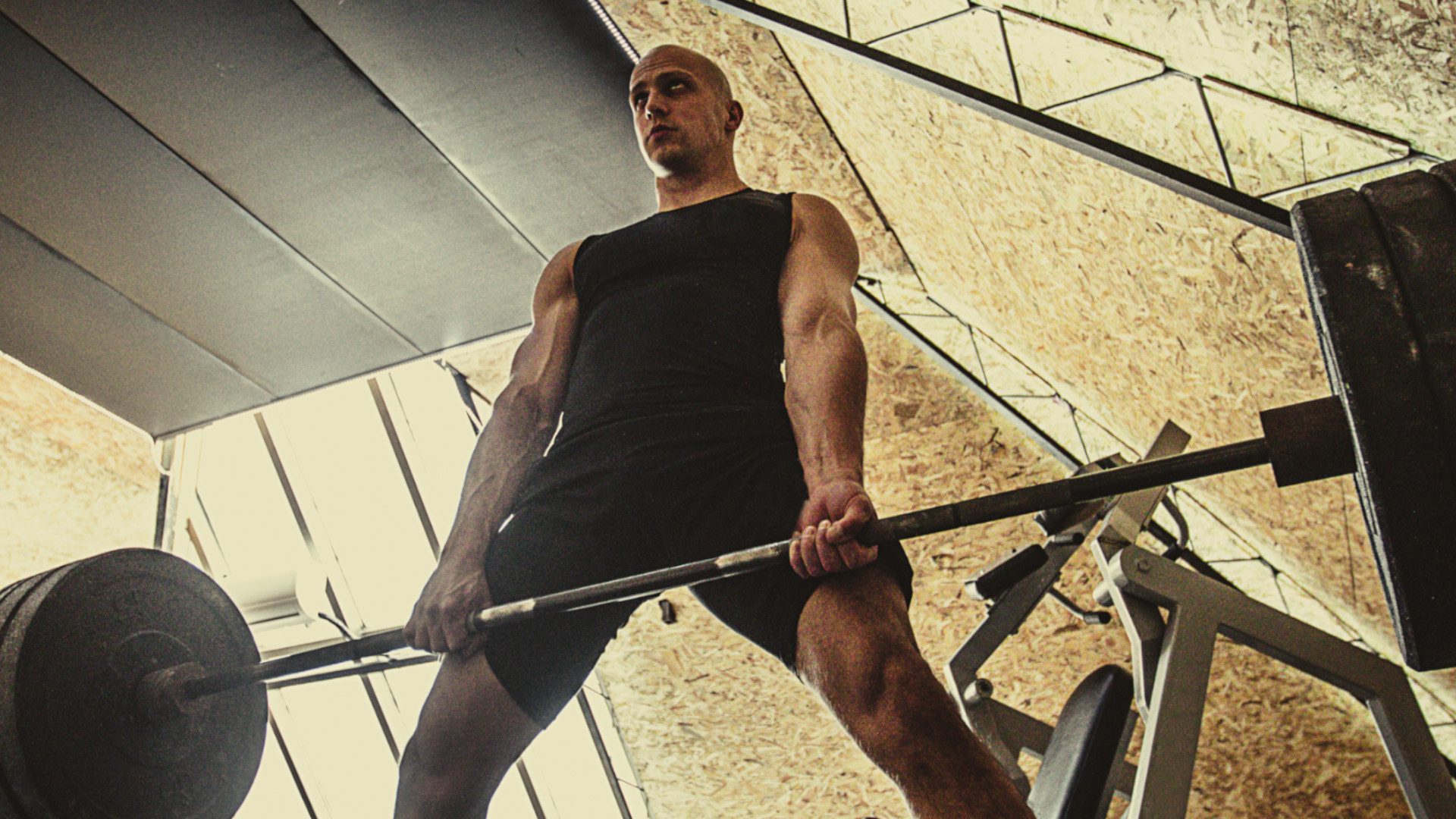The biggest difference lies in how you set up for each lift. In a sumo deadlift, you take a wider stance, placing your feet near the edges of the platform, and grip the bar with your hands inside your knees. In the conventional deadlift, your feet are about hip-width apart and your grip is placed outside your knees.
Because the sumo stance brings you closer to the ground, it naturally shortens the range of motion—the bar has a shorter path to travel. Conversely, the conventional stance places you higher above the bar, resulting in a longer lift.
Ali Woodward, a certified personal trainer and manager at Ultimate Performance, explains, “The sumo stance reduces the stress on the lower back and hamstrings and shifts the focus to the quads and inner thighs. That’s why many people find they can lift heavier using sumo.”
And that’s precisely where the “cheating” myth stems from.
Strengths and Limitations of Each Deadlift Style
Ali Woodward outlines the pros and cons of each lift to help you match the right technique to your goals and body mechanics.
✅ Sumo Deadlift Advantages
(Image credit: Getty Images)
-
Reduced Range of Motion: The wider stance and lower starting position can help you move more weight with less strain on your spine.
-
Easier on the Lower Back: A more upright torso allows for a neutral spine, minimizing lower back stress.
-
Targets Different Muscles: Because of the unique stance, it emphasizes muscles that the conventional version doesn’t hit as directly—especially the adductors.
-
Mobility-Friendly: Ideal for those with limited ankle or hip mobility.
❌ Sumo Deadlift Drawbacks
-
Less Hamstring & Glute Engagement: The mechanics reduce emphasis on the hamstrings compared to the conventional lift.
-
Technique Matters: Proper execution requires strong hip external rotation and solid core bracing, which can be challenging to master.
✅ Conventional Deadlift Benefits

(Image credit: Getty Images)
-
Superior Posterior Chain Recruitment: This version lights up the entire backside—perfect for strength and hypertrophy.
-
High Metabolic Demand: Because it activates so many muscle groups, it’s great for burning calories and building mass.
-
Functional Transfer: The movement mimics real-world lifting and enhances your posture and core stability.
❌ Conventional Deadlift Limitations
-
Mobility Demanding: Requires good ankle, hip, and thoracic spine mobility, especially for those with shorter limbs.
-
Lower Back Load: The horizontal torso angle places more strain on the lumbar spine, requiring careful attention to form and recovery.
-
Technical Learning Curve: Beginners may struggle to maintain proper spinal alignment and tension throughout the lift.
Which Deadlift is Better?
“If your objective is overall strength or muscle mass, the conventional deadlift might be the better tool,” says Ali. “But if you’re targeting your glutes and inner thighs or have lower back concerns, the sumo deadlift could be the safer and more effective option—especially early on.”
Still undecided? You might also want to explore the trap bar deadlift (aka the hex bar deadlift), which combines elements of both styles. It encourages good form, reduces back strain, and allows for impressive lifts.
The Takeaway: It’s Not About Which Is “Best”—It’s About What’s Best For You
At the end of the day, neither variation is objectively better. They each have distinct benefits and challenges. What matters most is choosing the deadlift that aligns with your body mechanics, mobility, and training goals.
Both sumo and conventional deadlifts follow the hip hinge pattern, a foundational movement in any strength program. The best version is the one you can perform safely, consistently, and with excellent form.
Call-to-Action: Choose Wisely, Train Smarter
Whether you’re a seasoned lifter or just stepping into the world of strength training, understanding your body and goals is crucial. Don’t get caught up in the debate—use it to inform your decisions. If possible, try both variations and consult a coach to fine-tune your technique. Your body will tell you which one feels right.
Ready to take your training to the next level? Start tracking your lifts, adjust based on your goals, and lift with purpose. Your strongest self is waiting.
Read our previous article: How Long Can You Track a Pixel After a Thief Shuts It Down?
